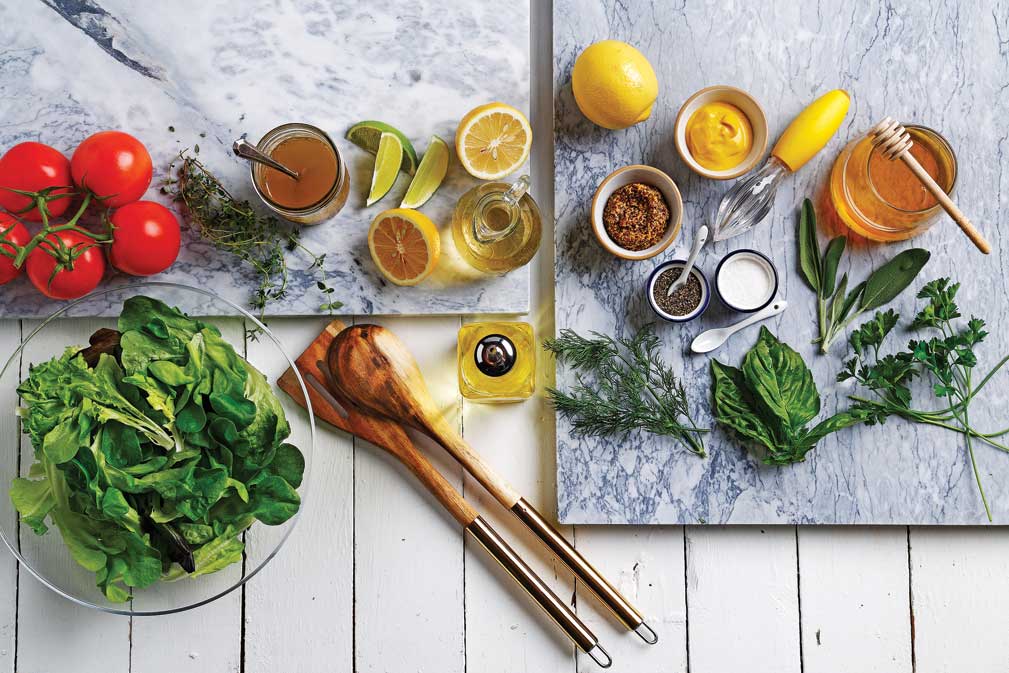Food Preparation, Cooking and Canola Oil

Q. What are the basics for making vinaigrettes with canola oil?
A. Canola oil works well for vinaigrettes because:
• Canola oil remains free-running when stored in the refrigerator.
• Canola oil is light in color and taste.
• The flavor of canola oil blends well with many different spices and herbs.
Blend canola oil and vinegar, then add herbs and spices such as salt, pepper, garlic, mustard, ginger or whatever you desire. Substitute lemon, lime or orange juice for vinegar if you like. Simply combine the ingredients in a jar, cover tightly and shake until blended. For a creamier texture, blend in a blender.
Click here for easy vinaigrette recipes made with canola oil.
Q. What are the benefits of using canola oil in marinades?
A. The benefits of using canola oil in marinades are that it:
• Helps keep food moist.
• Remains free-running when food is marinating in the refrigerator.
• Has a neutral flavor profile and lets herbs and spices shine through.
Marinating foods is an excellent way to add extra flavors to meats, fish, vegetables or even fruit. Marinades typically combine oil, acid, herbs, spices and often a sweetener. Acid such as vinegar, wine or citrus juice tenderizes while oil moisturizes. Garlic, mustard, Worcestershire sauce, herbs and spices add flavor. Sweeteners, like honey or brown sugar, aid in browning and balance the acid ingredients.
Click here for marinade recipes made with canola oil.
Q. Can canola oil be used for baking?
A. Canola oil works very well for baking because it:
• Produces a moist and soft texture.
• Does not impart a distinctive flavor to baked goods.
• Will lower the saturated fat content of baked goods when used instead of solid fats.
• Can also be used to grease cake pans and cookie sheets.
To substitute canola oil in your recipes that call for solid fat, such as butter, shortening or lard, use the following chart:
Baking Substitution Chart:
• 1 cup (250 mL) solid fat = 3/4 cup (175 mL) canola oil
• 3/4 cup (175 mL) solid fat = 2/3 cup (150 mL) canola oil
• 1/2 cup (125 mL) solid fat = 1/3 cup (75 mL) canola oil
• 1/4 cup (50 mL) solid fat = 3 Tbsp (45 mL) canola oil
Q. How long can canola oil be stored?
A. All oils eventually change flavor when exposed to light, heat and air. Canola oil will stay fresh for about one year if stored in a tightly covered container in a cool, dark place.
Q. What is the smoke point of canola oil?
A. A high smoke point of 468°F (243°C), making it ideal for high temperature cooking such as stir-frying, grilling and deep-frying.
Q. What is the best temperature for deep-frying?
A. It is important to maintain a frying temperature of 365-375°F. The batter coated surface will quickly form a protective shield, preventing the oil from penetrating the cooked food and making it greasy. The food will cook by conduction or indirect heat. If the oil is not hot enough, oil will reach the food before the coating cooks enough to form the protective layer. If the oil is too hot, the coating will burn from the direct heat of the oil before the food has had time to cook. It is best to preheat the oil to about 15°F higher than its optimal deep-frying temperature.
